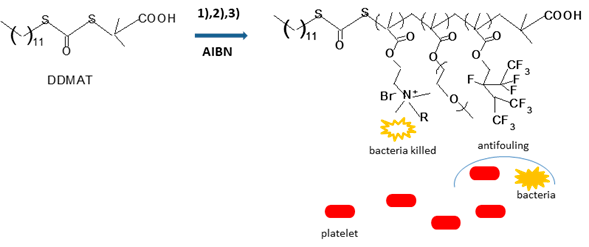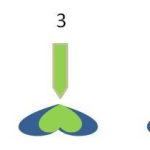In addition to resistance and strength, surface hydrophobicity is a main characteristic of fluoropolymers. This feature is typically found and widely recognized in polymers as Teflon (polytetrafluoroethylene). Associated with this property, its antifouling capacity is widely used industrially and in medicine. For instance, in medicine platelet adhesion at the plastic bags used for blood storage in transfusions must be avoided. Not only platelets must be repelled from the plastic bags surface but also bacteria that may be present. Although bacteria deposits and grows on the plastic bag surface is minimized when using antifouling polymers, bacterial biofilm formation may occur. Therefore, an antibacterial agent may be also needed. Recently, it has been reported1 the synthesis of three blocks copolymers successively joined to DDMAT as a chain transfer agent using a radical initiator (AIBN) and the three corresponding methaacrylates: 1) 2-(dimethylamino)ethyl methacrylate, 2) poly(oligo ethylene glycol) methyl ether methacrylate and 3) dodecafluoroheptyl methacrylate. This three blocks copolymer shows antifouling and antibacterial properties against S. aureus and E. coli. It also has long-term stability in high ionic strength solution of PBS (Phosphate-buffer solution) used to maintain blood cells after extraction. It may have also potential applications on utilities and medical equipment surfaces.

1.- S. Li, Z.Guo, H. Zhang, X. Li, W. Li, P. Liu, Y. Ren, X. Li ACS Appl. Bio Mater. (2021) 4, 4, 3166–3177





